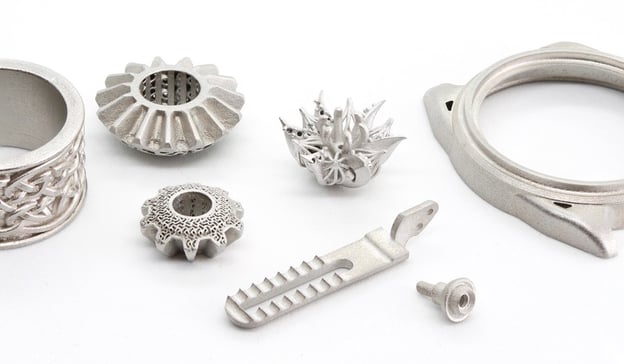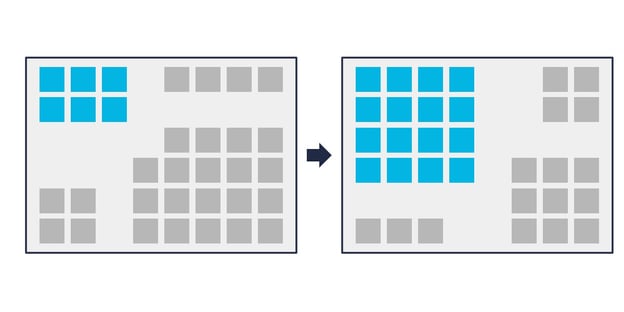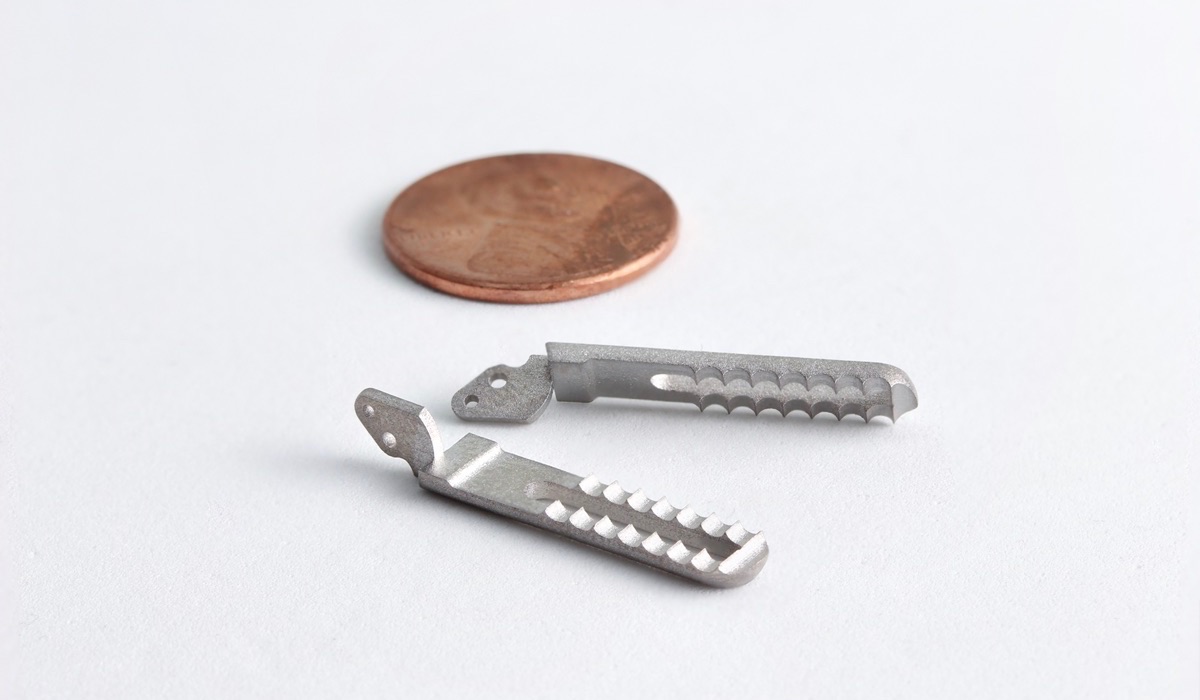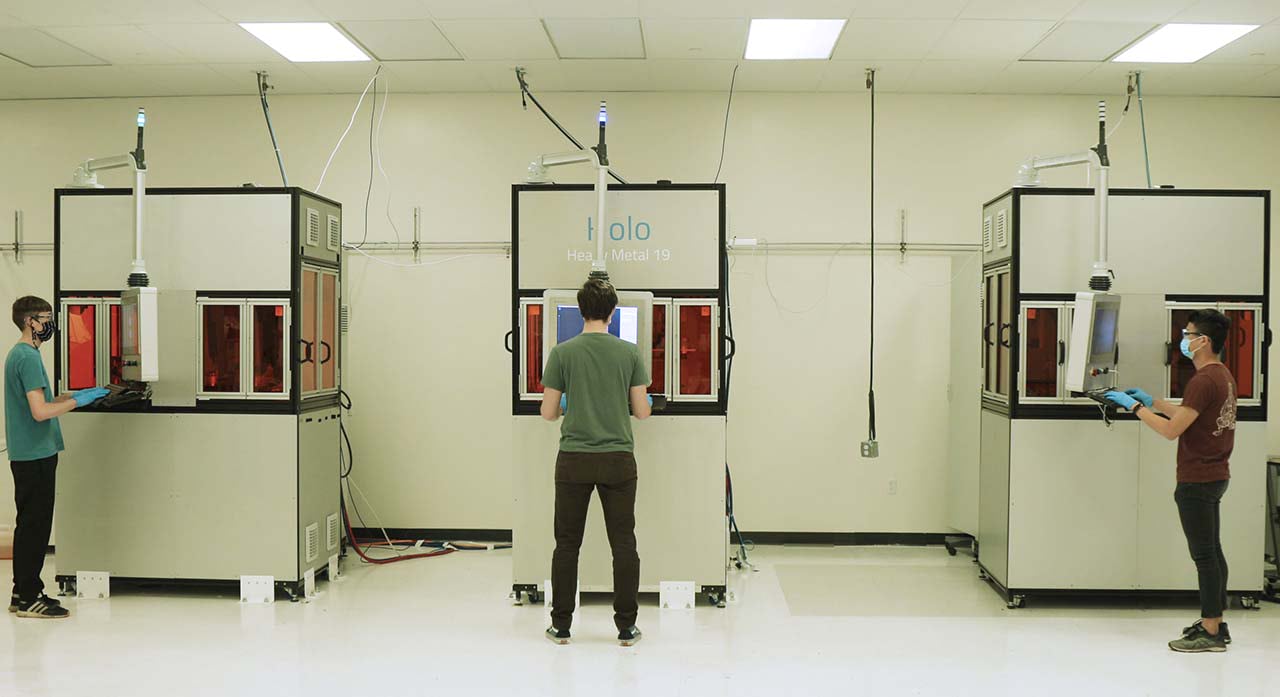When is the the right time to use metal 3D printing as a service?
The best way to solve a problem is to have the right tools for the job at hand, but tools are expensive, especially when they’re only infrequently used. This is only doubly true when it comes to metal 3D printing, where full end-to-end systems can run in the hundreds of thousands to millions of dollars, even before you consider facility prep, training, and maintenance. Many engineers will eventually run into a problem that can be solved with the use of 3D printed metal parts — far fewer will have enough high-value problems to justify the investment of bringing a metal additive manufacturing (AM) system in-house. If you find yourself in the majority, it might be time to consider a far more flexible and cost-effective option: metal 3D printing as a service.
Different engineering challenges necessitate metal parts with varied functional requirements, material properties, volume quantities, delivery speed, tolerances and more. These typically won’t all align with the capabilities of the same metal AM technology (and may not align with 3D printing at all), which means that even if you have an existing metal 3D printing system in-house, or are considering bringing one in, it’s likely that there will be many projects where you’ll need to use a different tool. Engineering and design teams that do find themselves with an ‘80% case’ — a high proportion of ongoing projects that can be solved by and justify the investment in a singular metal AM technology — are good candidates for acquiring a metal printing system. For everyone else, working with a service provider is often a faster and more cost effective way of getting what you actually need – parts.
In uncertain economic environments like today, working with a metal 3D printing service provider can be a sound financial decision. You’ll know your costs upfront and can understand immediately if a project is worth pursuing. You’ll have the agility to quickly adjust course if priorities change, and easily iterate over a multitude of designs that you might not otherwise have been able to test. Partnering with service providers can also de-risk the path to production, empowering you to develop more mature product designs by the time they go to market, as well as providing bridge and supplemental manufacturing capacity during scale-up or when demand unexpectedly outpaces forecasted production volumes.
The right technology, every time
Metal 3D printing services are broadly broken out into two main groups: third party service bureaus that operate metal AM technologies purchased from one or more original equipment manufacturers, and vertically integrated service providers — like Holo — that develop and operate their own technology directly. The capabilities of each group can vary widely but both produce 3D printed metal parts as a service, and they all offer a common benefit to the engineers and designers who rely on them: extreme flexibility.
Because you’re simply ordering metal parts from a vendor, there’s no need to develop a long term return on investment (ROI) model to justify capital expenditures (CapEx) spending like for large equipment purchases, and you don’t need to worry about whether future projects will be able to take advantage of the metal 3D printing technology under consideration. You can simply decide whether:
- the metal 3D printing process can meet your functional requirements
- the vendor can deliver your parts in an acceptable lead time
- the quoted cost is financially attractive
If everything checks out, order your parts and move on to other work while the vendor handles the rest.

An assortment of intricate stainless steel parts 3D printed with Holo’s PureForm service
The biggest benefit of leveraging metal 3D printing service providers is flexibility between projects. Need a large titanium cowling for aerospace? Turn to a vendor with the right laser powder bed fusion (L-PBF) capabilities. Prototypes for a four kilogram casting? Select a provider with wire-based directed energy deposition (DED) or a metal binder jetting system. Complex parts with tiny intricate features? Holo has you covered there — let’s discuss! If your team were working on every one of these projects, you could independently engage with several metal 3D printing service providers — leveraging several million dollars of metal AM equipment in total — but only incur the costs of the parts you need.
Spiky demand and scaling made easy
Metal 3D printing service providers can also be extremely useful when you need to scale up the quantity of parts you’re building, or if you run into unexpected spikes in demand. Internal metal AM resources can often be overwhelmed by these increases in required production volumes, and it’s generally expensive and slow to solve this by bringing in more metal 3D printing systems. And if you don’t expect the increased demand to remain consistent in the long term, you may not have the ROI to justify the cost and effort of investing in more equipment.

There’s (usually) always more capacity — service providers can typically just allocate more production capacity for larger quantity orders, whether that’s running more of your parts in a single build as shown in the above graphic, or dedicating more production runs to you.
Instead you can turn to a service provider for the capacity you need — as a supplement to your existing in-house resources or simply increasing the size of your order. The business case for a vendor offering metal 3D printing services is to aggregate enough demand from many customers in order to build a business and create a return on their investment in metal 3D printing systems. A larger order of parts due to a spike in demand will simply mean you are purchasing an increased share of a provider’s production capacity but is far less likely to overwhelm them than it is internal resources.
Advanced designs and full stack providers
Aside from the various technological capabilities of the processes each offers (you can read more about our tech here), the biggest difference between the two main groups of metal 3D printing service providers — third party service bureaus, and vertically integrated manufacturer-providers like Holo — comes down to how they can handle advanced, highly complex designs that push the limits of the technologies they operate.
Third party bureaus typically will have engineers on staff experienced in design for AM (DFAM), to help optimize your part designs for the processes and technologies they operate. The bureau’s engineering team will be able to help you select good applications (and reject poor ones) for their metal 3D printing processes and advise on part re-designs to ensure successful prints. The limitation of a third party bureau is that they’re operating equipment purchased from an OEM, and if a part design exceeds that system’s capabilities — features designed smaller than the minimum feature size of the process is a common example — there’s little the bureau can do, since they can’t change the underlying 3D printing system.
Vertically integrated service providers like Holo also have engineering staff that can assist with DFAM considerations (our customer-facing engineers are organized under our Product Engineering group), but do have the ability to improve, upgrade, or otherwise optimize their underlying technology to meet the challenges presented by advanced applications that push the limits of what’s possible. At Holo, we do this every day — our engineering teams consistently implement updates to our hardware, software, and materials, many of which are informed by challenging cutting-edge components that are critical to our customers’ product development. And since we operate our technology in-house, there are few barriers to implementing process improvements once they’ve been fully validated, meaning we can rapidly respond to our customers’ individual needs, and also immediately offer those improved capabilities to our entire customer base. The result pushes the state of metal 3D printing forwards for everyone.
A second look at 3D printing as a service
If you’ve considered metal 3D printing as a solution to an engineering challenge in the past, but couldn’t justify the investment of bringing equipment in-house, or if you’ve written metal 3D printing off entirely due to equipment cost, it might be a good time to consider it from a new perspective. Sourcing metal parts from a 3D printing provider can be a powerful addition to your engineering toolkit, one that can be far more cost-effective than you might expect.
—
Have a complex metal part that you’re having trouble producing through traditional processes? We should chat — get in touch with our team to review a project and see if we can help.


